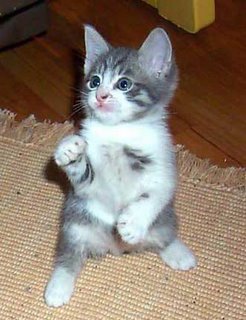Uncovering the secrets of Scientology - News
Richard Leiby is my hero :)
Uncovering the secrets of Scientology
GW professor helped expose details of scandal, covered trial of church leaders
by Matt Rist
Senior Staff Writer Issue: 4/5/10 | News
In a sleepy beach town in the Bible Belt, a 22-year-old journalist found himself in the middle of what was then considered by some a cult - and is now known as the Church of Scientology.
That young journalist was adjunct professor Richard Leiby, one of the first to unearth religious leaders' clandestine activities during his time at The Clearwater Sun in Florida.
During his stay at the now defunct Tampa Bay-area newspaper, Leiby was sent to the nation's capital to uncover details of a wide-ranging federal probe. Church leaders were accused of trying to destroy government records that portrayed Scientology's founder, L. Ron Hubbard, in an unfavorable light.
The investigation, which resulted in the conviction of 11 high-ranking church officials - including Hubbard's wife, Mary Sue - was jumpstarted when Gerald Wolfe, one of the conspirators, was arrested in June 1977 for using a forged government identification card. After subsequent raids by the Federal Bureau of Investigation revealed the church had illegally procured documents ranging from files on federal judges to agency personnel data, the story of the infiltration of the federal government began to come to light.
Soon after, Leiby was sent to D.C. to cover the ensuing trial - United States v. Hubbard - which began in August 1978 after a year's worth of legal wrangling had delayed its start in federal court. For Leiby, the assignment presented a chance to hone his skills as a young journalist fresh on the scene.
"This little paper sent me to Washington to cover a major criminal conspiracy case, which was certainly a defining moment in my career," Leiby said.
Among the things he discovered over the course of his reporting were plans by leading Scientologists to take control of the Clearwater city government. Now a major center for the church, Clearwater contains Scientology's spiritual headquarters, known as Flag Land Base. But back in the 1970s, Scientology was still a nascent force in the central Florida city, much to the chagrin of then-mayor Gabriel Cazares, who quickly became an enemy of the church's leaders.
What Leiby uncovered about the Clearwater conspiracy, he said, was explosive.
"I was able to get out of the courthouse more than 40,000 documents of internal church material which laid out a very deliberate scheme to take over the city of Clearwater," Leiby said, referring to what became known as Operation Goldmine. "When I say 'take over,' I mean frame the mayor in a hit-and-run accident so that [he] would be neutralized, because he was an anti-Scientologist."
More than 30 years later, Leiby has moved on from uncovering the intricacies of criminal conspiracies to more pleasurable pursuits. In addition to being an adjunct faculty member at GW, he is a style and arts editor at the Washington Post, where he also once served as the Reliable Source columnist, bringing readers the latest D.C. gossip. But he says he remains thankful for the skills he gained as a young reporter navigating the contours of a major federal investigation.
"I was about 22 years old and it was my first reporting job and it was an intensely complicated case," said Leiby, who had just graduated from Temple University when he was sent to Washington. "You don't learn these kind of cases in journalism schools."
And he has not left his background behind. The work he has done in the past is what makes Leiby's Introduction to News Writing and Reporting class a highly enjoyable event for his students to look forward to twice a week.
"I can use my own experiences to give real-life examples," he said. He has brought in a number of guest speakers to address the class, including National Enquirer Executive Editor Barry Levine, who talked about the future of journalism.
"I think [students] need to know what they are getting into. They need to hear from people who have made this transition into new media," Leiby said.
In Leiby's course, the classroom is a newsroom, and the deadlines are real.
"I gave students an exercise in which I was President Obama giving them a news briefing and then had them write their ledes in eight minutes," Leiby said. "This is how we do it - what you're going to learn is rapid turnaround."
The fast-paced assignments have made for a class that mirrors the experience students would have as professional journalists. And they don't seem to mind. Junior Jehan Morsi said she likes the class' high speed, adding that Leiby's background makes it more interesting.
"The professor teaches class as an editor would hold a final editing edition of the paper; we're his staff, he's the head editor," she said.
Monday, April 05, 2010
Subscribe to:
Post Comments (Atom)





No comments:
Post a Comment